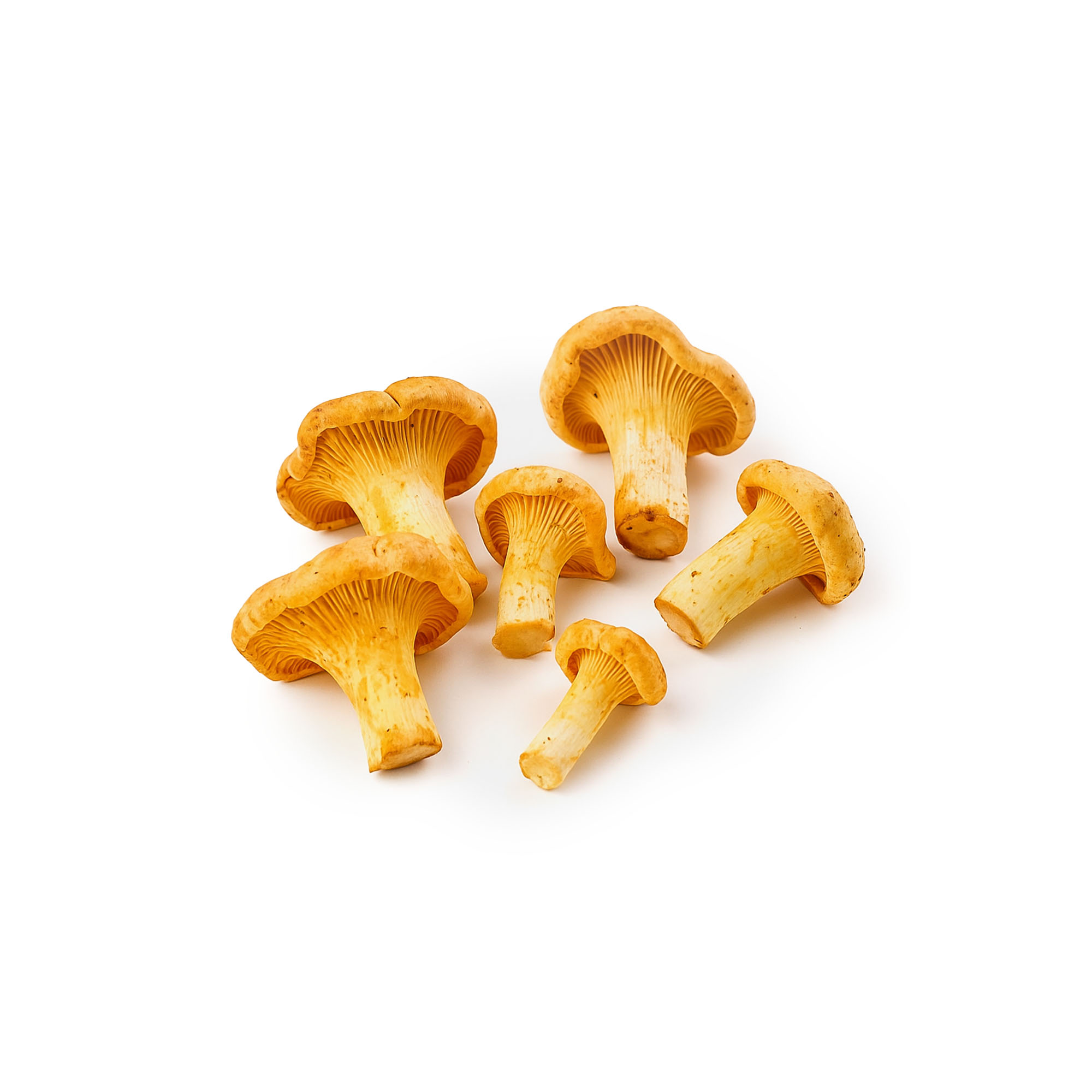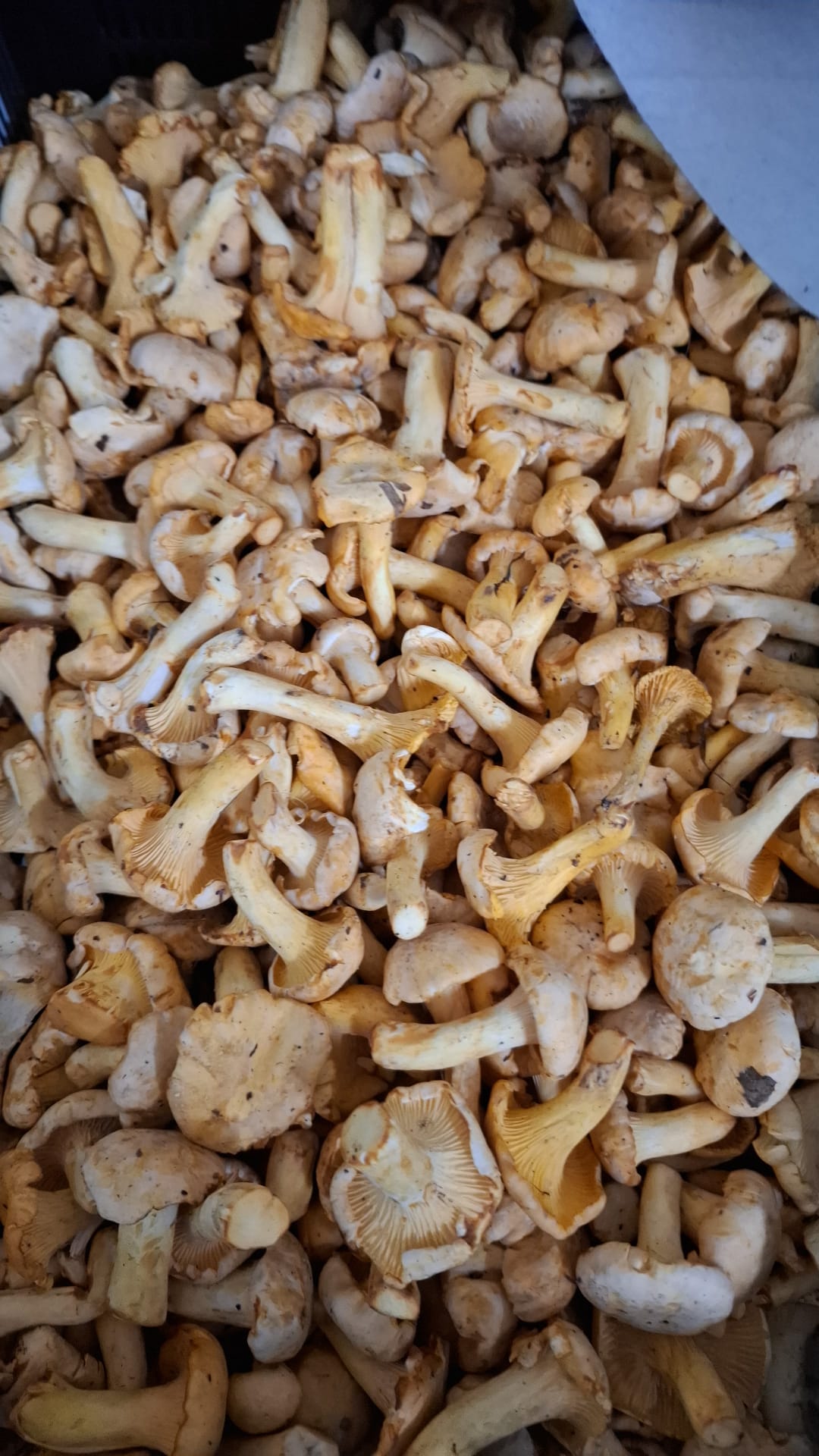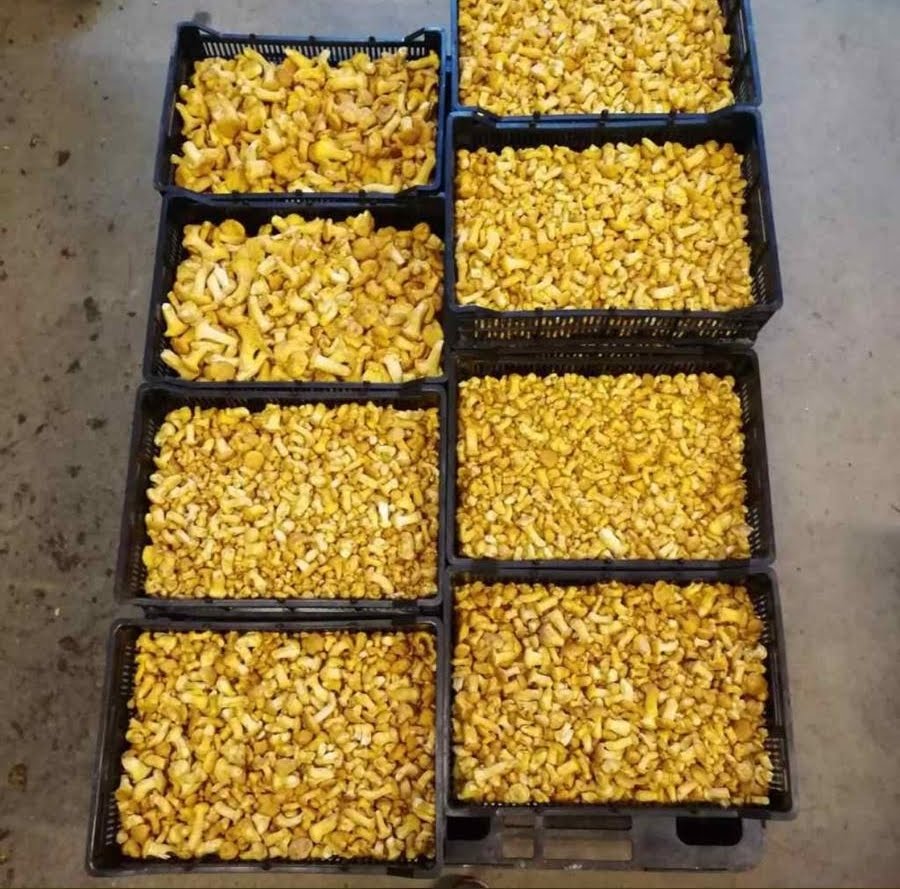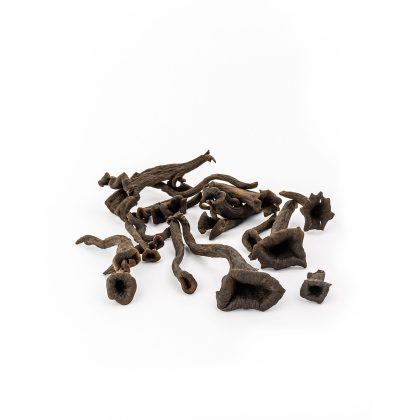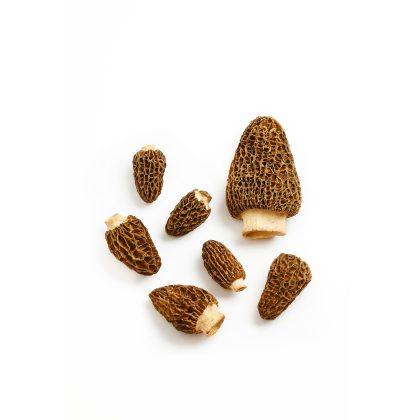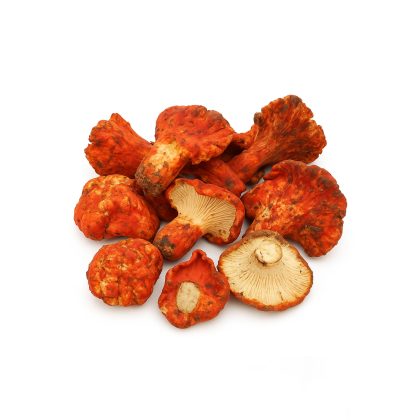Description & Taste
European chanterelles (Cantharellus cibarius) are among the most iconic wild mushrooms in the culinary world, celebrated for their vibrant golden hue, trumpet-like shape, and unmistakable aroma—often described as a mix of apricot, earth, and forest air. Their texture is firm and slightly chewy, holding up beautifully to heat, while the flavor is delicate, nutty, and gently peppery, with a mild fruitiness that deepens when cooked.
These mushrooms typically range from 2 to 8 cm in cap diameter, with ridged gill-like folds that run down a pale yellow stem. Their flavor pairs beautifully with butter, cream, white wine, and herbs like thyme and tarragon.
Seasons & Availability
European chanterelles are harvested from late summer through early winter, depending on the region and rainfall. They are available fresh for a limited time each year and should be stored refrigerated and unwashed until ready to use.
Current Facts
Native to deciduous and coniferous forests across Europe, chanterelles grow in symbiosis with trees, forming underground relationships that make them impossible to cultivate commercially. Foragers often find them beneath beech, oak, or spruce, especially after cool rains. Their slow, careful hand-harvest is part of what makes them so prized by chefs and mycophiles alike.
Nutritional Value
Chanterelles are rich in vitamin D, potassium, and B vitamins, with a notably high content of antioxidant carotenoids like beta-carotene. They’re also low in fat and calories, making them a flavorful, nutrient-dense addition to seasonal dishes.
Culinary Applications
Chanterelles shine in both rustic and refined preparations. Their firm texture and ability to hold moisture make them versatile and satisfying in a range of dishes:
- Sautéed in butter or olive oil with herbs
- Folded into cream sauces, risottos, or egg dishes
- Served with poultry, pork, or wild game
- Preserved in vinegar or oil for charcuterie boards
Avoid overcooking, and let their natural flavor come through with minimal handling. Their aroma and texture elevate simple dishes with elegance and restraint.
Ethnobotanical & Cultural Notes
In Europe, chanterelles have been prized for centuries in French, German, Scandinavian, and Eastern European kitchens. Known by names like girolle or pfifferling, they’re beloved not just for their flavor but for their association with autumn and the forest. Foraging traditions for chanterelles are passed down through generations, and their seasonal arrival is often celebrated at local markets and festivals.
Origin & Harvest Region
Gourmet Harvest’s wild European chanterelles are responsibly foraged from forests in central and eastern Europe, where cold nights and rich soil give them their signature aroma and depth. Each batch is carefully selected and shipped fresh, offering a true taste of the Old World.

